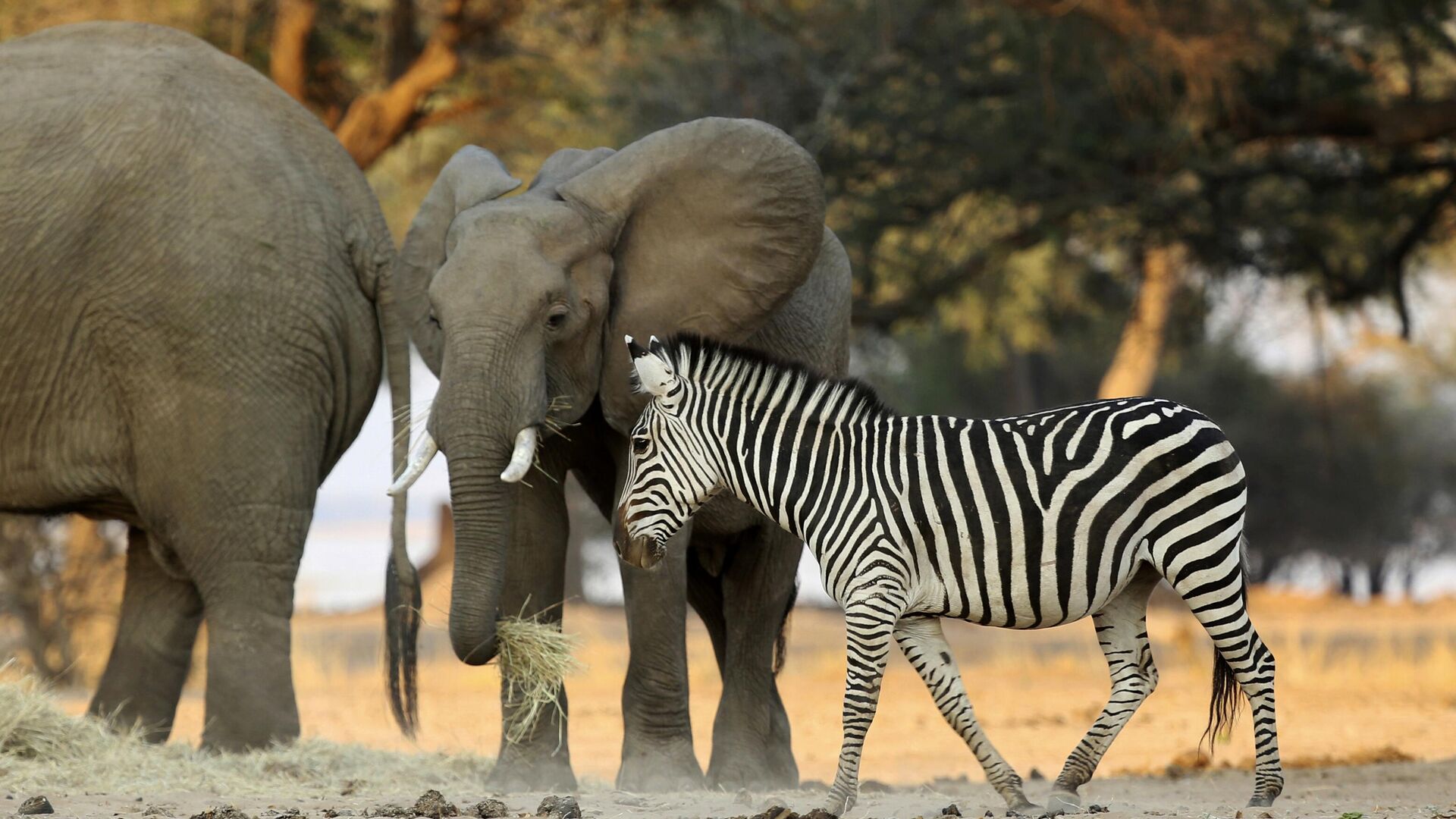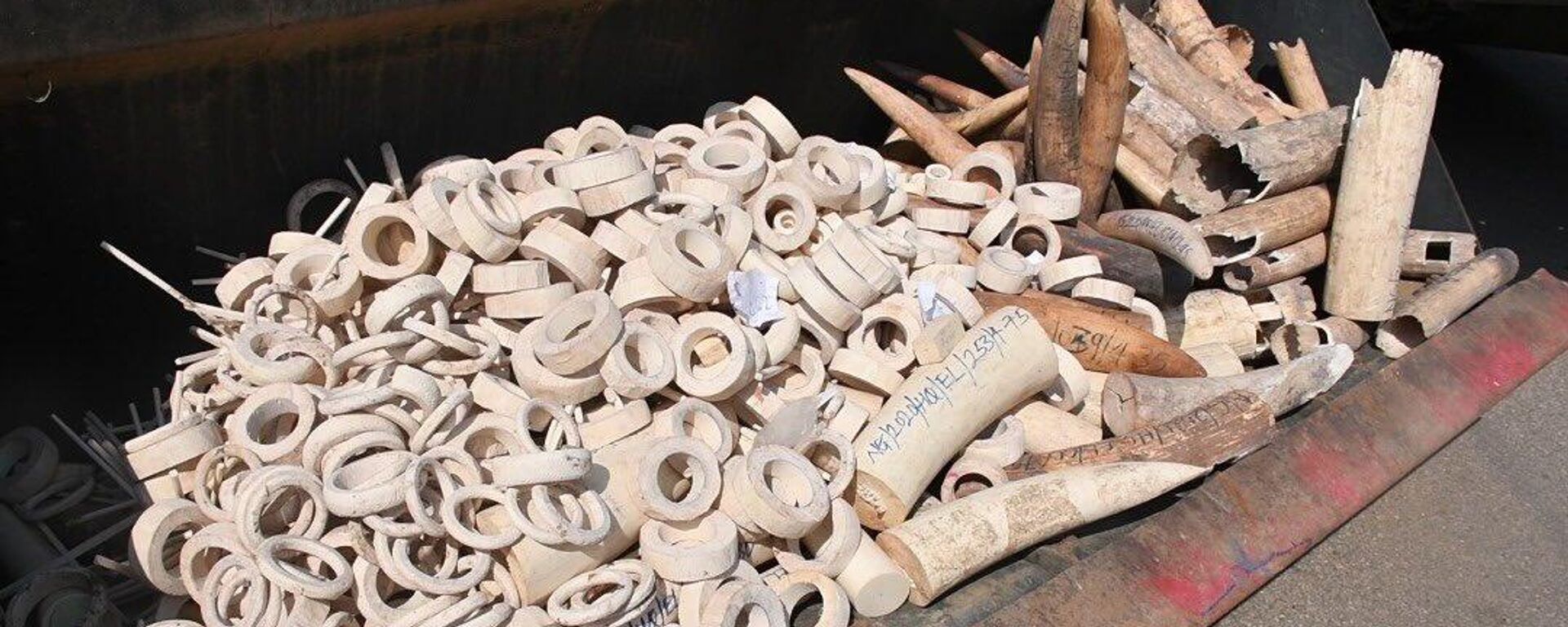https://en.sputniknews.africa/20240520/sub-saharan-africa-emerges-as-most-common-source-of-wildlife-trafficking-un-says-1066642922.html
Sub-Saharan Africa Emerges as Most Common Source of Wildlife Trafficking, UN Says
Sub-Saharan Africa Emerges as Most Common Source of Wildlife Trafficking, UN Says
Sputnik Africa
Wildlife trafficking is a multi-billion dollar industry that poses a serious threat to global biodiversity. It is driven by demand for exotic pets, trophies... 20.05.2024, Sputnik Africa
2024-05-20T16:28+0200
2024-05-20T16:28+0200
2024-05-20T16:28+0200
sub-saharan africa
sub-saharan africa
united nations (un)
asia
animals' protection
animals
wildlife
environment
south africa
rhino
https://cdn1.img.sputniknews.africa/img/07e7/0b/05/1063347946_0:148:3115:1900_1920x0_80_0_0_206b798e5843bffdcf9a4d1611ec8609.jpg
Sub-Saharan Africa, which accounts for 19% share of seizures of wildlife materials worldwide, is the most common source of global wildlife trafficking, according to the United Nations World Wildlife Crime Report 2024.The illicit wildlife trade saw a significant increase between 2015 and 2021, with the majority of seizures coming from sub-Saharan Africa and South Asia, accounting for 44% of total recorded seizures, the report said.According to the UN, rhinos were the most targeted species group in Africa, accounting for about 40% of seizures by species group using the standardized seizure index, pangolins became the second most affected species with 32% of seizures.In the year 2023, almost 500 rhinos were poached in South Africa, which is an increase of 11% compared to the year 2022, according to the country's Department of Forestry, Fisheries and the Environment.Some of the key actions taken by the world community to combat wildlife trafficking include the 1973 Convention on International Trade in Endangered Species of Wild Fauna and Flora and the activities of such international organizations as Interpol, United Nations Office on Drugs and Crime (UNODC), and the World Customs Organization (WCO).
https://en.sputniknews.africa/20240109/record-25-tonnes-of-confiscated-elephant-tusks-destroyed-in-nigeria-1064540197.html
sub-saharan africa
asia
south africa
Sputnik Africa
feedback@sputniknews.com
+74956456601
MIA „Rossiya Segodnya“
2024
Rasina Musallimova
https://cdn1.img.sputniknews.africa/img/07e7/0a/17/1063019139_0:0:646:646_100x100_80_0_0_348c74b69cf86748a53875f8148a2f85.jpg
Rasina Musallimova
https://cdn1.img.sputniknews.africa/img/07e7/0a/17/1063019139_0:0:646:646_100x100_80_0_0_348c74b69cf86748a53875f8148a2f85.jpg
News
en_EN
Sputnik Africa
feedback@sputniknews.com
+74956456601
MIA „Rossiya Segodnya“
Sputnik Africa
feedback@sputniknews.com
+74956456601
MIA „Rossiya Segodnya“
Rasina Musallimova
https://cdn1.img.sputniknews.africa/img/07e7/0a/17/1063019139_0:0:646:646_100x100_80_0_0_348c74b69cf86748a53875f8148a2f85.jpg
sub-saharan africa, united nations (un), asia, animals' protection, animals, wildlife, environment, south africa, rhino
sub-saharan africa, united nations (un), asia, animals' protection, animals, wildlife, environment, south africa, rhino
Sub-Saharan Africa Emerges as Most Common Source of Wildlife Trafficking, UN Says
Wildlife trafficking is a multi-billion dollar industry that poses a serious threat to global biodiversity. It is driven by demand for exotic pets, trophies, traditional medicines, and luxury goods made from animal parts. Poaching, habitat destruction, corruption, and inadequate law enforcement also contribute to the problem.
Sub-Saharan Africa, which accounts for 19% share of seizures of wildlife materials worldwide, is the most common source of global wildlife trafficking, according to the United Nations
World Wildlife Crime Report 2024.
The illicit wildlife trade saw a significant increase between 2015 and 2021, with the majority of seizures coming from sub-Saharan Africa and South Asia, accounting for 44% of total recorded seizures, the report said.
"Among the 4,000 animal and plant species that are affected by recent wildlife trafficking, there are different risks for overexploitation, ecosystem disruption, and potential impacts on climate stability. Socioeconomic harms are also diversified, reducing the benefits derived from nature, threatening human security, health and livelihoods, and having a corrosive influence on governance and the rule of law," the UN said.
According to the UN, rhinos were the most targeted species group in Africa, accounting for about 40% of seizures by species group using the standardized seizure index,
pangolins became the second most affected species with 32% of seizures.
In the year 2023, almost 500 rhinos
were poached in South Africa, which is an increase of 11% compared to the year 2022, according to the country's Department of Forestry, Fisheries and the Environment.
Some of the key actions taken by the world community to combat wildlife trafficking include the 1973 Convention on International Trade in Endangered Species of Wild Fauna and Flora and the activities of such international organizations as Interpol, United Nations Office on Drugs and Crime (UNODC), and the World Customs Organization (WCO).



